Chinese mitten crab invasion is growing and we won’t ever be able to force them out of UK, says expert – as Britain’s first trap to catch them is unveiled
>
China’s first ever mitten crab trap has been installed in Britain, amid rising numbers of the invasive species.
Mitten crabs, which first appeared in the UK in 1935, have recently been seen traveling around London and Cambridgeshire, including in a park in the south-west of the capital, a weir in Whittlesea and a country park in Peterborough.
The species – named after its furry tentacles – is believed to have moved from eastern China to Europe and North America in sediments found at the bottom of ships’ ballast tanks.
The crab can be recognized by its grey-green to dark brown body and dense brown “fur” on its white-tipped claws.
Dr. Paul Clarke is a researcher in the Department of Life Sciences at the Natural History Museum, specializing in Chinese glove crabs.
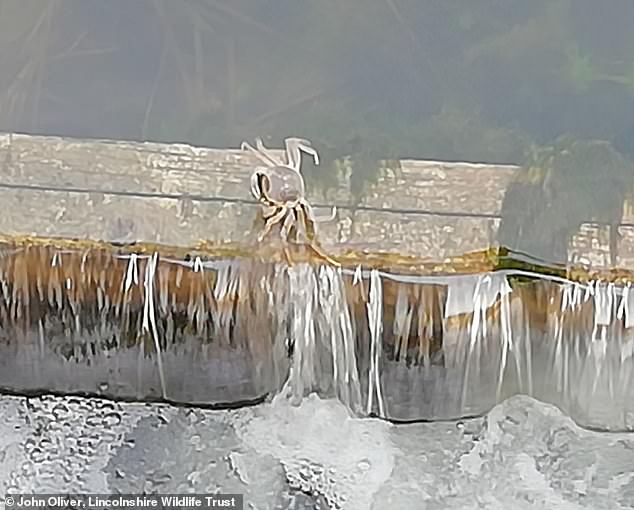
A mitten crab was photographed climbing over the dam at Pode Hole before the trap was installed

A Chinese mitten crab encountered by a dog walker at Bushy Park in Richmond upon Thames
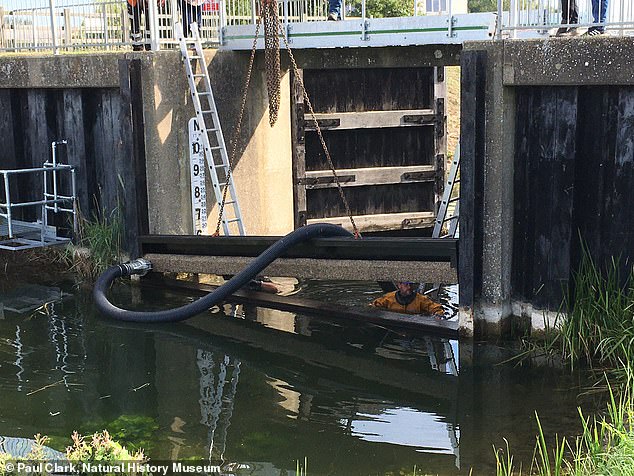
China’s first permanent mitten crab trap has been installed at Bud Hall, in Lincolnshire
He has worked with them since 1976, after he was asked to recover the second mitten crab ever found in Britain.
In an interview with MailOnline, Dr Clark said: ‘The numbers are rising because they have a very unusual life history.’ After migrating downstream, adult females may be able to produce three eggs.
The number of eggs produced in each incubation can range from 500,000 to one million. This is the number of larvae they hatch in the estuary. Of course, not all of those larvae will develop into baby crabs to return to the stream again.
“But once this species becomes established, it is very difficult to get rid of.”
China’s first permanent mitten crab trap has now been installed at Pode Hole, in Lincolnshire, in collaboration with the Lincolnshire Wildlife Trust, the Welland and Deepings Internal Drainage Board and the Natural History Museum.
They hope this trap will catch mitten crabs migrating downstream and upstream.

Dr. Paul Clarke is a researcher in the Department of Life Sciences at the Natural History Museum, and specializes in Chinese glove crabs
They installed the trap on August 31 this year, but have not been able to catch a Chinese crab yet. Dr. Clark says it may be delayed due to warm weather, but he’s not sure.
Mick Henfrey, who works for the Welland and Deepings Inland Drainage Board, built the trap. Welland Board also donated around £8,000 to build the device.
The trap acts like a mailbox, trapping the mitten crab inside until it is extracted and transported for analysis.
Dr Clarke believes that if he walked to Chelsea Bridge, within an hour he could pick up around 50 to 100 baby crabs.
He added that Chinese mitten crabs “have very few predators,” perhaps the odd crane and birds, but he believes it will not reduce their numbers.
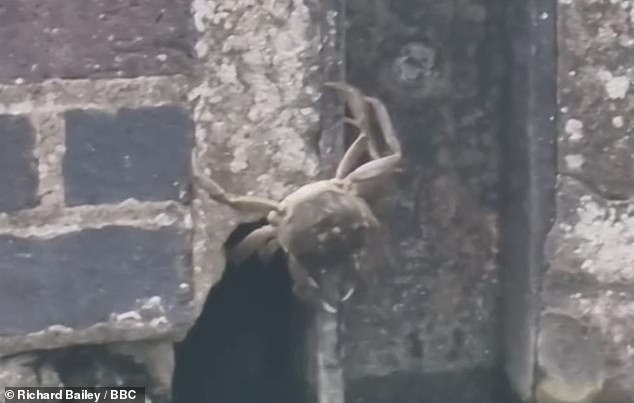
The crustaceans have been seen in waterways in Cambridgeshire, including the dam at Whittlesea (pictured)
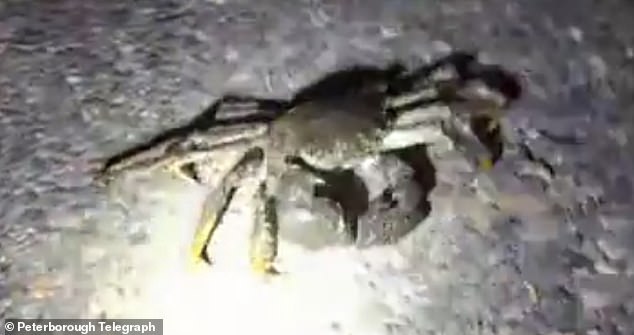
The crabs erode river banks by burrowing and also affect the fishing industry by feeding on fish stocks and damaging nets.
“I imagine off the top of my head that if otters came back in any numbers, their numbers would probably be depleted, but at this moment in time the otter population, especially in the Thames for example, is not depleted at all.”
When asked if Chinese mitten crabs threaten our native species, Dr. Clark said: “Yes, they eat us out of house and house.”
“We were very worried because we thought they were eating fish eggs. We fed them some fish eggs and they ate everything.
He added: “It is likely that biodiversity in the Thames has declined significantly, and the same in other areas, but this is difficult to monitor.”
At this time, it is not known what the Chinese crab feeds on in the first place. Dr Clark said they would freeze and preserve the crabs caught in the trap, and perhaps investigate what they were eating.
He assures that no glove crabs will be released again into the area. “There is a possibility over a number of years that we could deplete this population in this watershed,” the expert added.
“The problem with this crab is that it has an unusual life history and spends most of its time in freshwater. It’s not a true freshwater crab,” Dr. Clark said.
“In Africa, for example, you have true freshwater crabs, which live in rivers and don’t migrate back and forth, and that’s the way they are. We don’t have any freshwater crabs.
“This crab fills a niche that was not occupied before in our country and perhaps on the continent as well.
“That’s why it’s causing problems because our native fauna hasn’t evolved with this crab. As an invader, it’s something new.”
The Natural History Museum said the invasive crabs can grow to the size of dinner plates. Dr. Clark said that he had in his laboratory a mitten crab with a body width of 85 mm (8.5 cm).
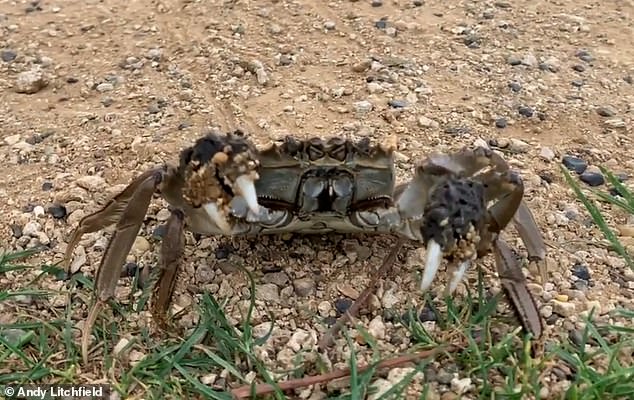
Since 2016, the species – named after its furry tentacles – has been classified as “widespread” across the UK.
The Chinese mitten crab is thought to have settled in the River Thames in 1973 and has spread further afield since then, including the Tyne, Humber, Medway, Wharfe, Ouse, Tamar and Dee rivers.
Since 2016, the species – named after its furry tentacles – has been classified as “widespread” across the UK.
According to the Natural History Museum’s ‘Mitten Crab Watch’, more than 800 records have been submitted so far – confirming that the creature is spreading across the UK.
Their interactive map shows that crab sightings have been confirmed across Britain, including London, Newcastle, Manchester, Swansea, Glasgow and Brighton.
Andy Litchfield said he was walking his dog in Bushy Park, southwest London, when he saw a crab last Friday.
And he said to Woking News and Mail He had seen crabs before but “never seen them on Earth.”
He added: “I was walking my Labrador in Bushy Park on Friday morning when he stopped to smell something on the ground, and I was surprised to see that it was a crab.”
He captured video of the encounter, which saw the crab get defensive and stick its claws into the air.
At the end of last month, one of these creatures was spotted at the Royal Society for the Protection of Birds (RSPB)’s Fen Drayton Nature Reserve, near Huntingdon.
Simon Bassey was walking into the car park when he saw the creature. Tell Fishing job: ‘It was alive and had very large pincers, and I had never seen anything like that in Finn Drayton before.
“I took pictures, but I didn’t want to touch them.”
Defra said it had received reports of crabs in the Cambridgeshire Fens, and encouraged people to report sightings to stop the movement of their eggs and urged people to take photos.
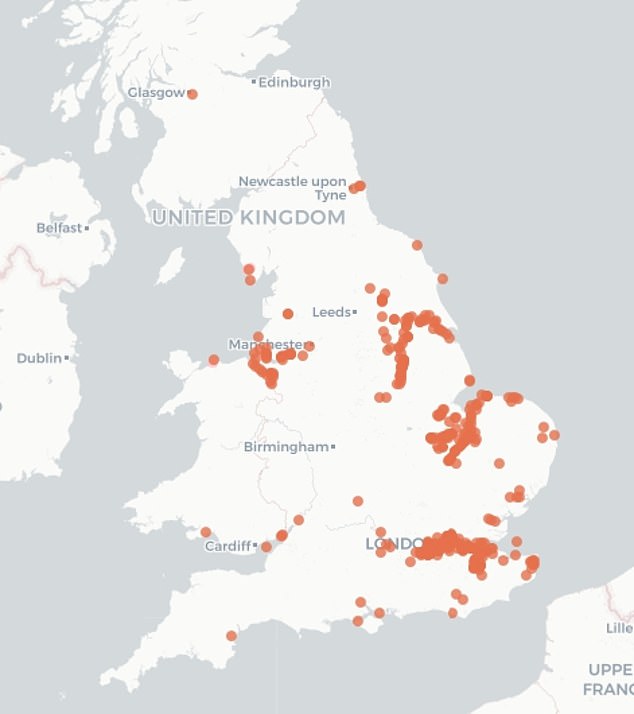
Map shows sightings of Chinese mitten crabs across the UK: population is growing, experts say
(Tags for translation)dailymail
